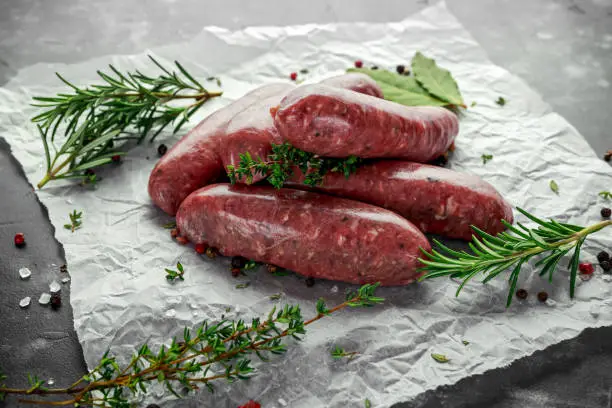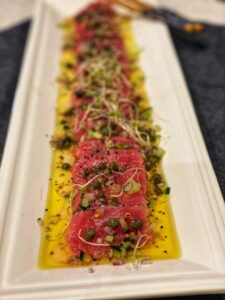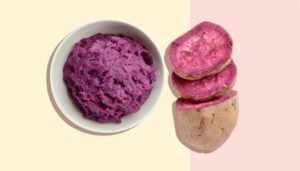
Freshly made raw breed butchers sausages in skins with herbs on crumpled paper
Introduction
Chorizo is popular far outside of Mexico and can be found in a wide variety of delectable meals, such as soups, burgers, sandwiches, and tapas.A common component of many Hispanic cuisines, including those influenced by Spain like those from the Philippines, is chorizo. Because chorizo is a common taco filling in Mexican cuisine, many Americans are familiar with it.
But as far as this category of sausages goes, that is merely one kind of chorizo, the tip of the iceberg. There is plenty to discover in the world of chorizos, from the flowery grilled chorizos of South America to the crumbly Mexican variations and smokey cured Spanish chorizo. Here, we define chorizo, discuss the variations across varieties, and provide cooking and consumption tips.
What Is Chorizo?
One of the various varieties of Spanish sausages is chorizo, which has its origins in Spain. The Portuguese word sourico is thought to have originated the late Latin word for salted, which is where the word “chorizo” originates. But via Italy, another word for sausage, salchicha, was also added to the Castilian language, which is sometimes called the Spanish language. Actually, the terms “chorizo” and “salchicha” both allude to sausages.
A particular variety of pork sausage with numerous regional variations is commonly referred to as “chorizo” in Spain. This sausage is fermented and cured, giving it a dry texture similar to salami or pepperoni that is frequently eaten raw. A common tapas dish served with other small plates and alcohol, chorizo is frequently seen on charcuterie boards.
In Spain, “chorizo” refers to a specific type of pig sausage that has many regional variations. This sausage, which is often eaten raw, has a dry texture akin to that of salami or pepperoni due to its fermentation and curing process. Chorizo is a typical tapas dish that is typically served with other small plates and wine on charcuterie boards.W
What includes in chorizo
Depending on the type of chorizo and the region it is manufactured in, many different ingredients can be used to make it.
Three components are often found in most Spanish chorizos: pork, smoked paprika, and garlic. The pork is roughly diced and combined with regionally-specific seasonings and chunks of hog fat. After stuffing the mixture into organic casings, the chorizos are allowed to dry and cure. The level of spice that separates the many varieties of Spanish chorizos is one of their key characteristics. Shorter, fatter chorizos are usually spicy, although longer, thinner chorizos are usually spicy as well.
Even though it would be costly to acquire, Spanish smoked paprika is not always used in the many varieties of chorizo that are made outside of Spain. To give the sausages a crimson color reminiscent of the original Spanish version, annatto seed is utilized in some regions. Local chiles are used in some Latin American cuisines, particularly Mexican, to add color and flavor, resulting in chorizo that is hotter. To provide brightness and tang, the meat mixture of Mexican chorizos is additionally infused with vinegar. This was done to resemble the white wine that some Spanish chorizo recipes call for.
Although pig is the main ingredient in Latin American chorizos, a growing range of meats and even plant-based alternatives are also in demand. Throughout much of South America, the word “chorizo” has come to refer to any coarse sausage. These differ greatly in terms of size, form, coarseness, and ingredient ratios, but frequently include paprika, garlic, and pork. Some might also include extra components, such as regional spices or herbs. Some chorizos from South America deviate significantly from the traditional Spanish recipe. For example, chorizos from Argentina often have a pale tint and lack paprika, making them resemble fresh Italian sausages rather than Spanish chorizo.
Types of Chorizo
Chorizo Cantimpalo
This particular variety of dried and thoroughly cured chorizo is Spanish, and it comes from the Salamanca and Cantimpalo regions of Spain. Tapas menus frequently offer this kind of chorizo, which you can slice and serve with bread and Manchego cheese. Additionally, it is the variety of chorizo that is most frequently used in Cuban and other Hispanic Caribbean recipes that call for chorizo. It is a deep crimson color and tastes smokey and quite garlicky.
Mexican Chorizo
This is a sort of chorizo that is fresh and requires cooking. Although many other types of meats, including offal and plant-based substitutes, are frequently utilized these days, the original method calls for finely ground pig. A small amount of paprika is used in Mexican chorizo, but pasilla or other regional chiles provide the majority of the flavor and color. In addition to other spices, Mexican chorizo also contains vinegar and oregano. Mexican chorizo, in contrast to other varieties, is frequently cooked without the casing and coarsely crushed.
Mexican Green Chorizo
Another fresh variety of chorizo, this one is made with finely ground beef or pork combined with fresh herbs, such as cilantro and/or sawtooth coriander, plus green chiles and tomatillos. When fresh, it is a vivid emerald green, but after cooked, that hue fades. These are more difficult to find outside of Mexico or in regions where there are sizable Mexican populations. Make sure to always verify the contents, as some dishonest sellers may include an excessive amount of green food coloring in their green chorizos.
Colombian Chorizo
This is another variation of the typical South American fresh chorizo. The majority of the time, chorizos are consumed whole, grilled, fried, or sliced in Colombia. A common accompaniment to them is arepas, which are fried or griddled maize cakes. Spanish-style chorizo contains more paprika and is spicier than Colombian chorizo, which is made in Mexico. While regional differences exist in Colombian chorizos, many of them use finely chopped fresh cilantro and green onions in addition to garlic and a little amount of vinegar.
Argentine Chorizo
There is an overwhelming variety of chorizos available in Argentina, and many homes produce their own using special methods. Due to the high percentage of Italian ancestry in Argentina, Italian flavors and cooking methods are heavily incorporated into the country’s cuisine. As a result, several herbs, including nutmeg, garlic, wine, oregano and thyme, may be used in Argentinean chorizos. The majority of the time, grilled Argentine chorizos are served as a part of a larger platter of grilled meats. Additionally, they are a component of the well-known choripan sandwich.
FAQS
What is Chorizo Really Made of?
All of the pig used to make Spanish chorizo is a combination of lean and fatty cuts. It is generally accepted that a 3:1 ratio is optimal for lean meat to fat.
What Are Regional Varieties of Chorizo?
Chorizo Navarra,
Chorizo Castellano,
Chorizo Riojano,
Chorizo Andaluz
Do You Need to Peel Chorizo?
Not unless it has a plastic or paper skin on top of the sausage casing.
How Long Does it Take Chorizo to Cook?
It takes about 10 to 30 minutes





